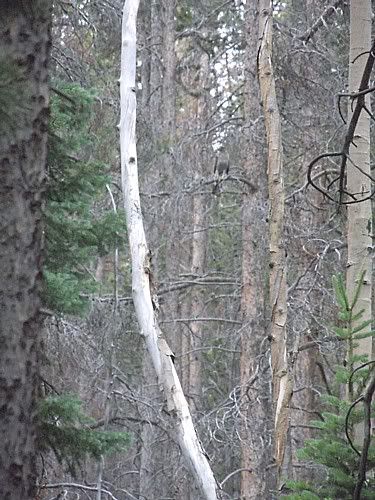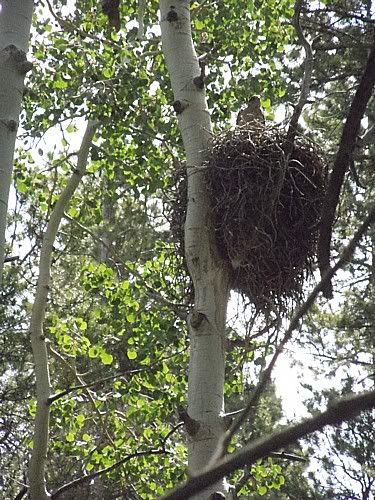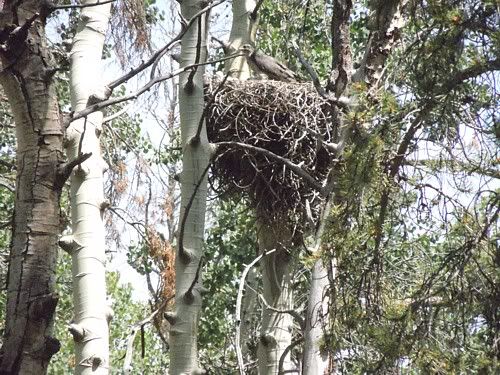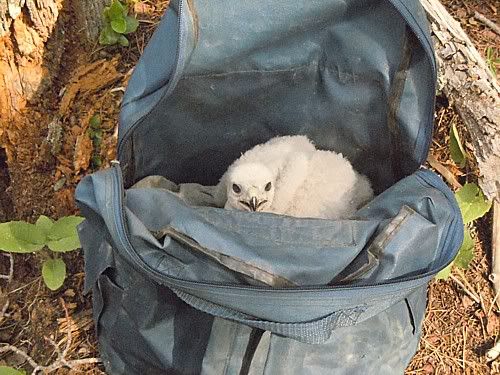 2012 gos imprint
2012 gos imprint
I guess it's time to start my own thread on this bird. I'm still not sure on the gender, because it's a rather strange bird. It was pulled from a nest with severe quarry shortage in the vicinity. That's one of the things we noticed while walking in, searching for an alternate nest that seems to have blown down, and while taking the eyass. No birds singing, no squirrels chittering, no snowshoe hare sign, and no food reserves in the nest. This nest usually has four young, and I think that only the oldest and the youngest were still alive. The other bird was definitely a female and about 5-6 days older than this one. The other two probably became food as they passed away. There are no Cain and Able records with goshawks, but once they die, they do become food in a hard situation.
Anyway, we thought the bird looked like a female at first, because the tarsi and toes were swollen. After a few days of good feedings, the swelling went away, and it started looking more like a tiercel. Then the feet started growing and took on female length but tiercel skinniness; 4 3/4" from tip of hallux talon to tip of middle talon. The tarsi are also real long but skinny. The beak and cere look more male, but the weight is now up around 800 grams, which is way higher than a tiercel from this area should be at this age. The body looks real large, but it's hard to say, because it has the heaviest down I've seen on a gos.
It was very fearful when taken even though it was only about 17 days old. I think that probably had to do with the larger, older sister and having to fight for whatever food it could get. The morning after we took it, it cast a huge pellet made up mostly of mouse fur that was real soggy. I'm thinking that it only got whatever was left over after the other bird ate.
It has now calmed down and appears to be imprinted on me. We put squeak and small stuffed toys in the nest a few days ago, and it went right to playing with them. I'll be using the Brunotte method of imprinting on this bird, which is a haphazard way of doing things at best but has turned out some pretty good birds in the past. It consists mainly of spending lots of time with the bird, feeding by hand and forceps, lots of touching, and adapting to whatever the bird seems to need to continue in taming and training...
Here are some photos from take to today:




Richard Brunotte
Colorado









 Reply With Quote
Reply With Quote